
What was considered far more valuable than gold and silver in Biblical times?
What would kings and queens of antiquity never be caught without?
What was found in King Tut’s tomb and cherished for its health-giving benefits for thousands of years?
The answer to all of these questions comes from one of the oldest secrets of the natural world: essential oils.
Today, we’re going to uncover the reasons why essential oils have been used for more than 5,000 years to promote health, wellness and beauty.
And we’ll also see why kings and queens, like King David, King Solomon and Queen Esther, would never be caught without these oils in their treasure chest.

But before we talk about the amazing benefits these oils can deliver and their many uses, I want to answer some key questions about essential oils:
- What are they?
- What makes them so healthy?
- And besides the great smell, why have they remained so popular throughout history?
What Are Essential Oils?
Have you ever smelled the crisp, refreshing scent of a fresh cut lemon?
Or maybe you’ve breathed in the cool, tingling air of real peppermint?
If so, you may have already experienced the power of essential oils and not even know it.
Essential oils are responsible for the fragrances you smell. They’re also the nutritional compounds inside many plants and herbs. And once extracted from the plant or herb, they bring many of the same health-giving benefits to the table. One reason they’re so powerful is because they’re the “essence” of the real plant or herb, only in a highly concentrated form.
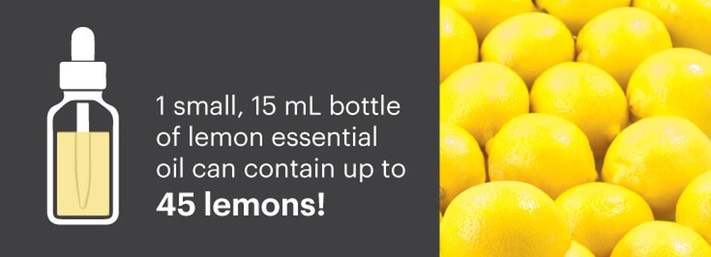
Where Does the Aroma Come From?
The naturally occurring aromas of essential oils come from volatile compounds inside the fruit or plant. When pressed and concentrated, the rinds of citrus fruits or the roots, stems and flowers of plants release volatile compounds that represent the true essence of the plant.
If the words “volatile compounds” makes you nervous, don’t worry.
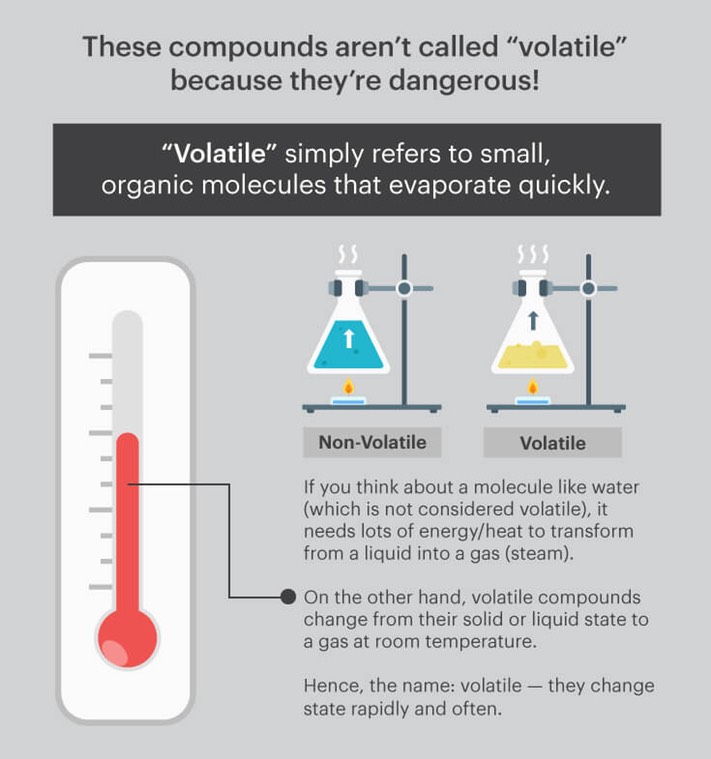
The first time you experience an essential oil, you’ll notice this characteristic almost instantly. In fact, the moment you open a bottle, you’ll get a waft of the pleasant aromas inside.
That instant smell you’re greeted with is the volatile compounds at work.
This volatility makes essential oils ideal for diffusing and for practices such as aromatherapy. But make no mistake. Aromatherapy isn’t just about the aroma of essential oils.
The effects of the fragrances and these volatile molecules go even deeper — all the way to your bloodstream and your limbic system.†
How?
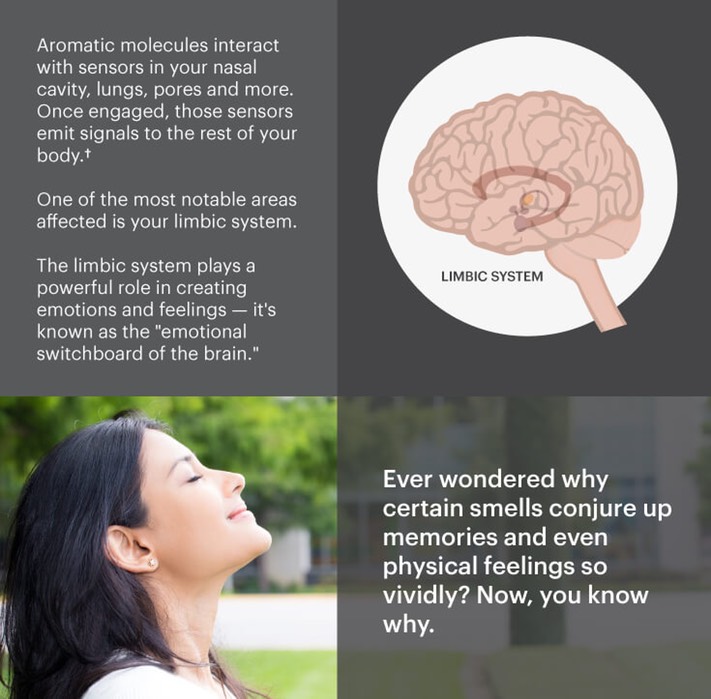
The limbic system is directly connected to areas of the brain that control all of these key areas:
- Heart rate
- Blood pressure
- Breathing
- Memory
- Stress levels
- And hormone balance
Because essential oils can support this system, new scientific evidence shows that inhaling essential oils may be one of the fastest ways to create physiological or psychological benefits.†
I should pause right here and point out that there’s a huge difference between ingesting a substance and smelling it.
When you ingest something, it enters your stomach and is processed mainly by your digestive system.
An aroma, however, activates your olfactory nerves and goes directly into your body, lungs and bloodstream. This direct interaction with key areas of the body produces unique and, in many cases, powerful health benefits.†
And that’s not all. Essential oils can also enter the skin directly. When added to creams and lotions or massaged directly on the skin, essential oils can deliver a host of healthful qualities.
Take lavender, for example.
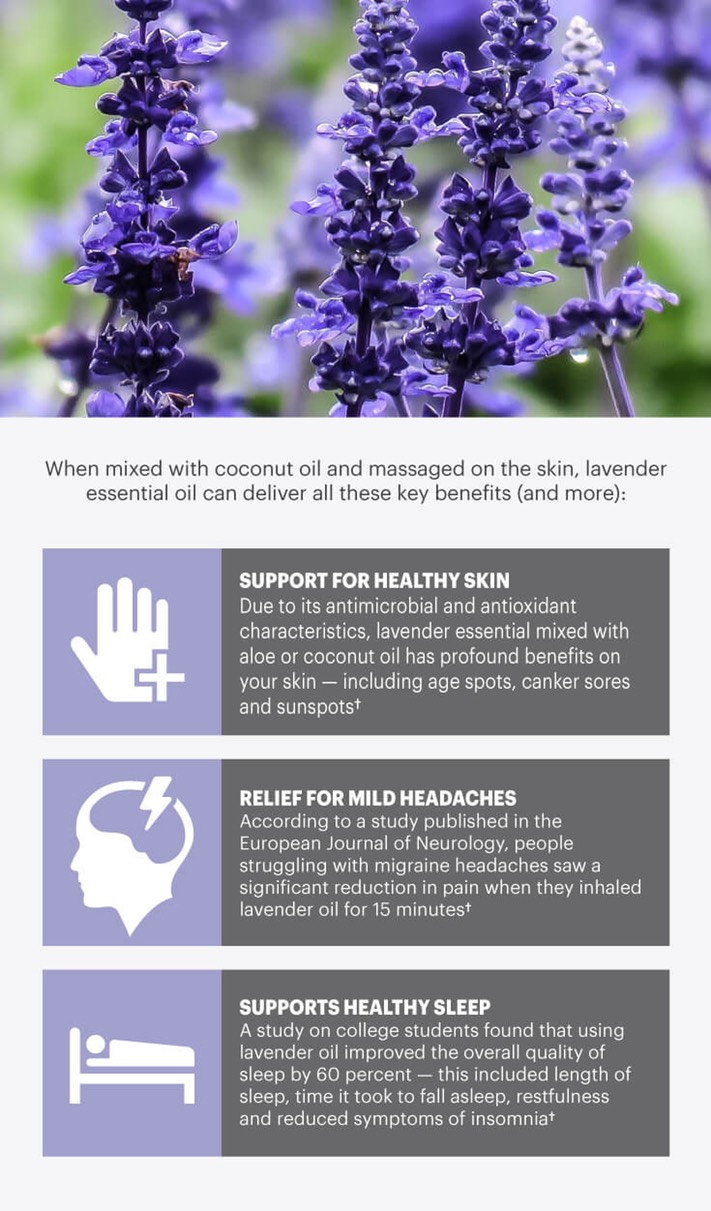
How?
For starters, your skin is the largest organ in your body. In just one square inch of skin, you’ll find all of these vital functions:
- 650 sweat glands
- 100 sebaceous (oil-producing) glands
- 78 heat sensors
- 13 cold sensors
- 165 structures that perceive pressure
- 1,300 nerve endings
- 19 yards of blood vessels
And every one of those roles can be influenced by what the skin comes into contact with.
That’s where essential oils come into play. They bring the health-giving benefits of nature to your pores directly.
It’s clear that the benefits are far-sweeping. But before you dive into using them, let’s examine how they’ve been used throughout history and the best ways to use them in the modern world.
Science Finally Confirms the Wisdom of Our Most Trusted Text
Like I’ve alluded to before, beyond their beautiful fragrances, essential oils can deliver some powerful health benefits.
Evidence of these benefits dates back thousands of years to:
- Ancient Egypt
- Ancient Rome
- And even our most trusted text: The Bible
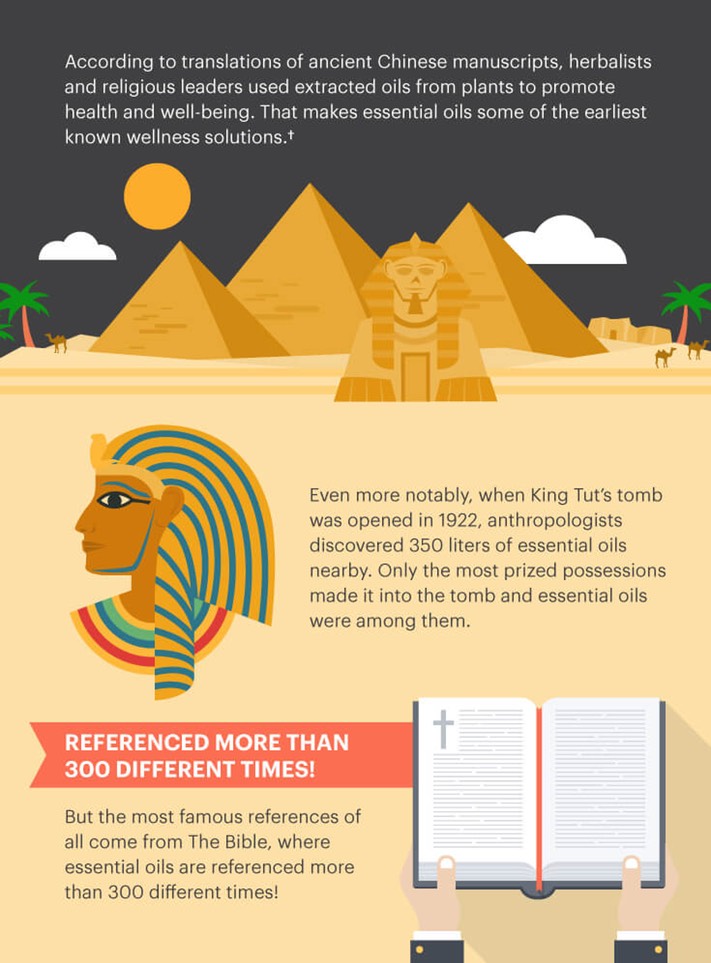
Biblical historians have found scriptural references to all of these key essential oils:
- Frankincense
- Myrrh
- Galbanum
- Rosemary
- Hyssop
- Cassi
- Cinnamon
- Cedarwood
- Myrtle
- And Spikenard (aka Lavender)
All of these essential oils were used for anointing and for promoting health.†
And do you remember the story of three kings visiting baby Jesus and Mary after his birth? The kings offered gold, frankincense and myrrh.
These oils were so cherished and so valuable, they were two of the three things given to God’s only son! Talk about powerful.
In the modern world, essential oils are as popular as ever before.
They’re used in many household care and beauty products.
Where do you think things like lavender-scented shampoo and lemon-scented soaps come from?
However, because of mass production and commercialization, many essential oils are both less present in today’s products plus don’t have the same health-giving abilities they used to.
When oils are not held to high-quality production standards and are not rendered from all-natural sources, they simply don’t deliver the same benefits. And in some cases, they can even be toxic.
Historically, the plants used to make essential oils were grown organically — without pesticides, herbicides and genetically modified organisms (GMOs). In part, they were grown that way because toxic chemicals like that did not exist. Equally, people also knew the real power of essential oils comes from their connection to nature.
Sadly, that’s not the case for many essential oils today. Most essential oils on the market are neither organic nor are they non-GMO.
In fact, in the modern world, there are 4 grades of essential oils you need to look out for:
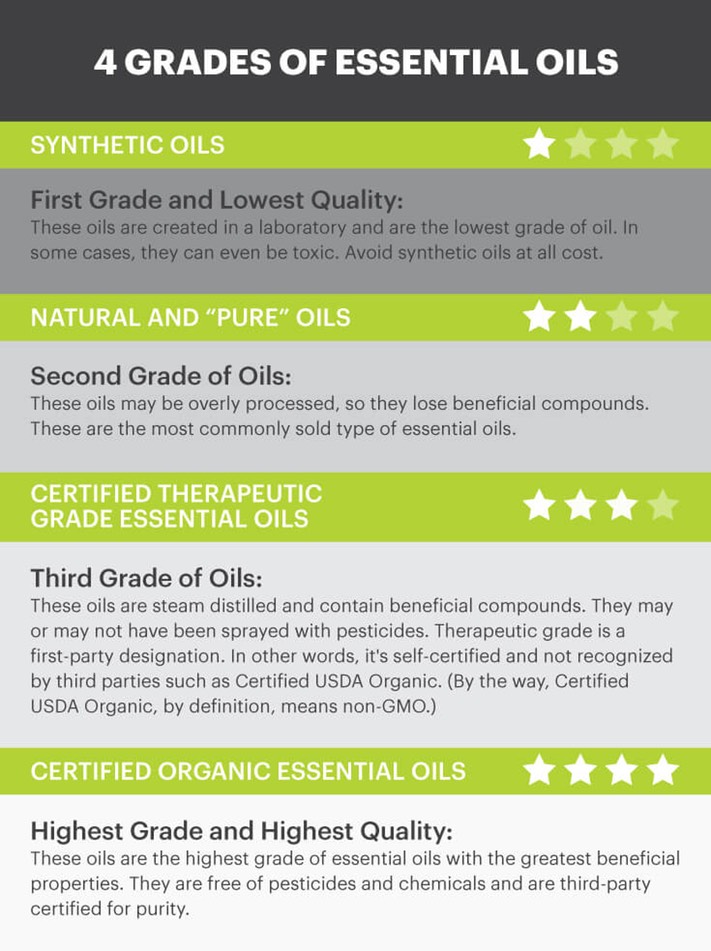
How do you begin the process for the best essential oils? Well, it starts with planting high-quality plants in nutrient-dense organic soil. Then these herbs or plants must be harvested when their beneficial compounds are most available.
Unfortunately, many people today consume mega-doses of synthetic grade or non-organic essential oils, which can be toxic, standardized and full of unwanted chemicals. As a result, many of these synthetic essential oils are unable to provide the powerful, health-giving benefits. Instead, they really are just a nice smell with none of the healthful benefits.
Most commercially available essential oils are nothing more than a man-made concoction of synthetic chemicals, an ineffective combination of water, cheap oil and inorganic chemicals.
In fact, even if you take so-called “therapeutic” essential oils that have been extracted from real plants, they will not be as effective since they’ve been grown on farms coated with pesticides and other resin.
In summary, an ideal essential oil should be:
1) Certified Organic
2) 100% Pure and Therapeutic Grade
3) Sourced indigenously or come from certified organic land
4) Not contain any bases, fillers or any additives
If you can find an oil that meets all of these criteria, great! You can feel good knowing that the provider has taken every possible measure to deliver the best essential oil available.